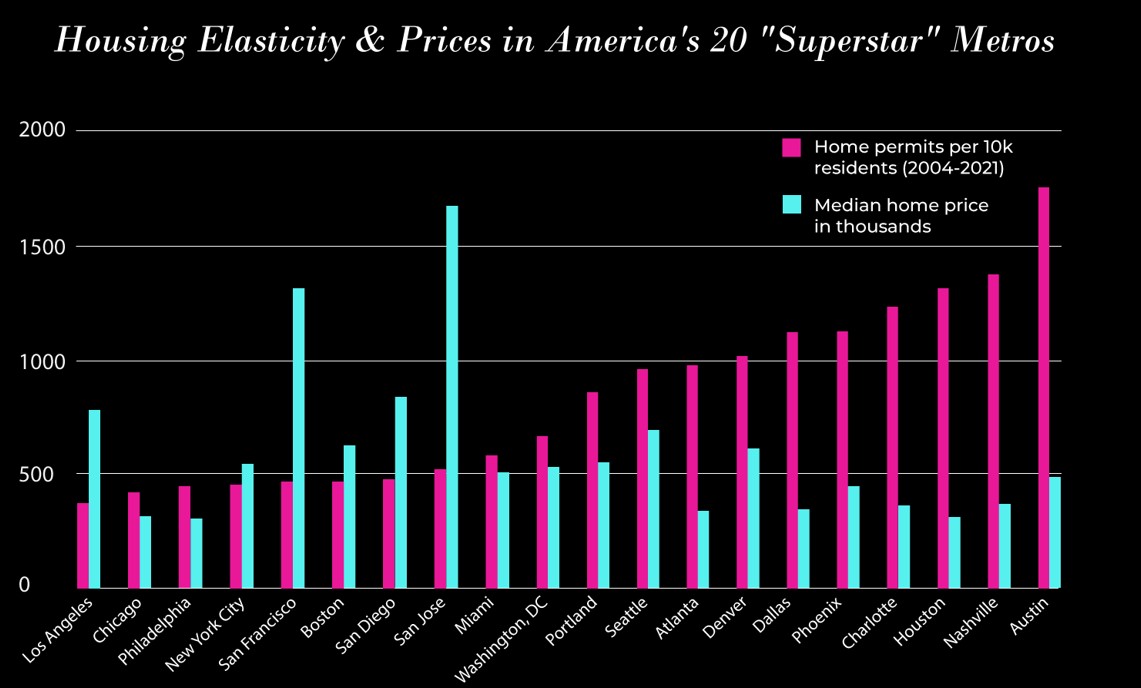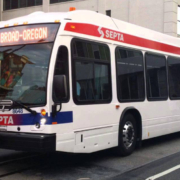Post HTX Diversity, Housing Costs Hurt Education and more
Took my visiting cousin to POST Houston Saturday night and it had the most Houston diversity I’ve seen in one place in 40 years here, both in food and people. Just incredible. These photos don’t do it justice. Every ethnicity in the city was represented! Very cool place worth visiting if you’re ever near downtown.
Moving on to a few small items this week:
- Marginal Revolution: Moving From Opportunity: The High Cost of Restrictions on Land Use
“Enrico Moretti (2013) estimates that 25% of the increase in the college wage premium between 1980 and 2000 was absorbed by higher housing costs. Moreover, since the big increases in housing costs have come after 2000, it’s very likely that an even larger share of the college wage premium today is being eaten by housing. High housing costs don’t simply redistribute wealth from workers to landowners. High housing costs reduce the return to education, reducing the incentive to invest in education. Thus higher housing costs have reduced human capital and the number of skilled workers with potentially significant effects on growth.”
- Very cool tool that I’m also very glad Houston doesn’t need because we don’t need the public’s approval over what gets built where: Fast Company – This ingenious tool helps cities avoid rabid NIMBY arguments over housing – Balancing Act helps calm the contentious process of deciding where housing should get built.
- NYT: Twilight of the NIMBY – Suburban homeowners like Susan Kirsch are often blamed for worsening the nation’s housing crisis. That doesn’t mean she’s giving up her two-decade fight against 20 condos.
“How does a place (CA) that prides itself on progressive politics have so many policies that exacerbate inequality? How do homeowners whose window signs say they welcome every oppressed group rationalize a housing system that has caused their own children to flee?”
- Market Urbanism Report: “Our latest data dive shows a clear correlation between permit rates fm 2004-2021, and current median home prices, in America’s 20 “superstar” metros. Houston remains America’s best metro for combining strong population/job growth with low prices. It’s also had the most net permits (945,068) over this period. Not a coincidence.” Hear hear! Click to enlarge the graph:

Finally, be sure you fill out the H-GAC 2045 Regional Transportation Plan survey before the end of June. They also have a Comment Map where you can add comments to very specific locations. Here was my public comment submission after attending their virtual public meeting:
“Very excited about the REAL network of managed/MaX Lanes! By far the most effective, cost-efficient, flexible, adaptable (to autonomous vehicle technology), and realistic transportation solution for a metro like Houston. Bike lanes and transit are nice amenities but will never be able to address more than a tiny slice of trips in Houston. Houston’s future vibrancy and economic success is absolutely critically tied to expanding convenient, fast transportation used by the vast majority of people (cars), and if we ignore that and pretend we don’t need to make any more traditional transportation expansions to accommodate growth (like freeways) we will stagnate into gridlock like LA, which has invested tens of billions into transit expansion while overall ridership *dropped*.”
This piece first appeared on Houston Strategies Blogspot.
Tory Gattis is a Founding Senior Fellow with the Urban Reform Institute (formerly Center for Opportunity Urbanism) and co-authored the original study with noted urbanist Joel Kotkin and others, creating a city philosophy around upward social mobility for all citizens as an alternative to the popular smart growth, new urbanism, and creative class movements. He is also an editor of the Houston Strategies blog.



 Roy Luck
Roy Luck




